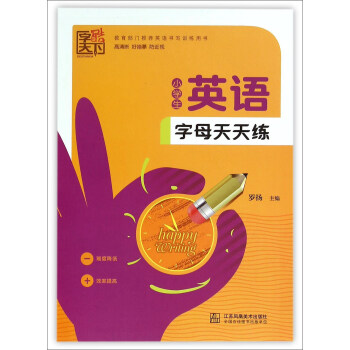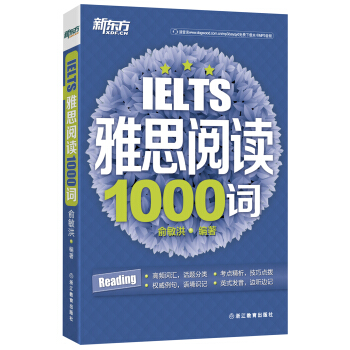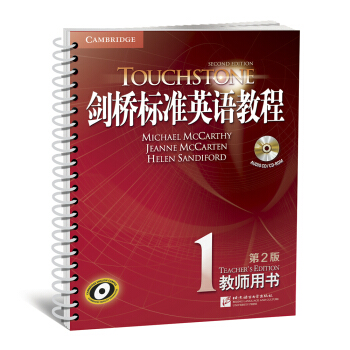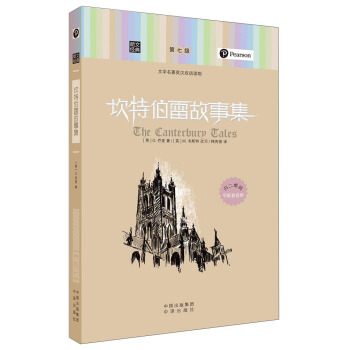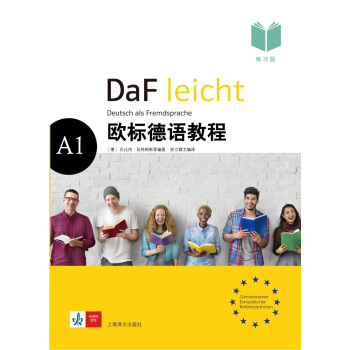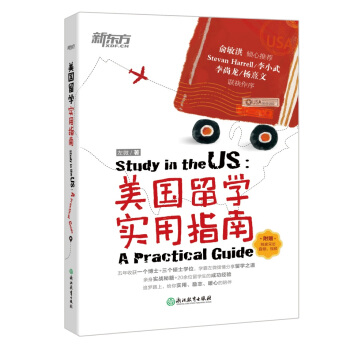![中國概況(英文版) [China Panorama]](https://pic.tinynews.org/11018353/56440355N4bccbef1.jpg)

具體描述
內容簡介
China Panorama is intended for the use by international students coming to China to study the required course "China Panorama". As well as reading material for all of those studying Chinese as a second language, this book is the top choice for learning Chinese culture and motivating students' interest. This book introduces topics such as Chinese geography, culture, history, international relations and the development of the nation.Readers will find they are inspired, challenged and provided with cultural facts throughout the learning process. In the practice sections, lots of thought provoking and practical exercises are set, encouraging intercommunication between book and readers, teacher and students. It achieves the perfect match of cultural awareness and students needs.
作者簡介
GUO Peng,He graduated from Peking University with Doctorial Degree on Chinese Literature in 1997. Now he is a professor of College of Chinese Studies at Beijing Language and Culture University.CHENG Long,He graduated from Peking University with Doctorial Degree on Chinese History in 2004. Now he is an associate professor of College of Chinese Studies at Beijing Language and Culture University.
JIANG Xiliang,He graduated from Beijing Language and Culture Uruversity with Master's Degree on Chinese Literature in 2010. Now he is working at the President's Office of Beijing Language and Culture University.
WANG Qun,She graduated from Portsmouth University in the UK with Master's Degree on Management of Education and framing in 2008, Now she is an editor at Higher Education Press.
內頁插圖
目錄
PrefaceReader's Guide
Index of Pictures
Chapter 1 The Geographical Environment and Chinese Culturt
The Main Characteristics of China's Geographical Environment
The Influences of Geographical Environment over
China's Agricultural Civilisation
Confucianism and Ancient Agricultural CMlisation
Agriculture and Changes in Population and Language
Activities
Chapter 2 The History and Society of China
The Early History and GMlisation of China
Confucius and His Influence
The Rise and Fall of Ancient China
China's Transition to a Modern Society ActMties
Chapter 3 Chinese Traditional Thoughts
Pre-Qin Times:The Making and Prosperity of Chinese Thought
Integration and Vibrancy of Thought in the Han Dynasty
Great Boom of Thought and Wei-Jin Style
Creative Efforts in Thought in the Tang Dynasty
Neo-Confucianism in the Song and Ming Dynasties: Recreation of Confucianism
Enlightenment of Three Great Philosophers of the Early
Qing Dynasty
Activities
Chapter 4 The Lives of the Ancient Chinese
Basic Necessities of Ancient Chinese
Language and Characters of Ancient Ghina
The Glamour of Chinese Traditional Arts
Customs and Ceremonies of Ancient Chinese Society ActMties
Chapter 5 China's Contribution to the World's Science and Technology
The Papermaking and Printing Technology of Ancient China
The Silk and Porcelain of China
The Unique Traditional Chinese Medicine
The Achievements of Mathematics and Astronomy of Ancient China
Activities
Chapter 6 Migration and China's Social Changes
The Major Migrations in Chinese History
Influence of the Migrations on Chinese Language
Migrations in Modern Ghina
Overseas Chinese and the Spread of Culture
ActMties
Chapter 7 Awareness and Collision Between China and the West
Marco Polo and The Travels of Marco Polo
Matteo Ricci and the Spread of Western Civilisation in China Ming and Qing Emperors' Promotion of the Western
Gulture Spreading in China
The Controversy over the Etiquette Rite and the End of Catholicism in China
ActMties
Chapter 8 China in Modern Times and Western Civilisation
Modern China's First Batch of Figures Learning from the Outside World and Their Works
……
Chapter 9 The Life of Contemporary Chinese People
Chapter 10 Political System and Basic Poliaes ofChina in the Present Age
Chapter 11 China Gradually lntegratinginto the lnternational Community
Appendixes ABriefChronology of Chinese History
用戶評價
這本書對於地方性知識和非主流敘事的納入,著實是超越瞭我對“概況”類書籍的固有預期。通常這類作品往往過度聚焦於首都或核心區域,而忽略瞭廣袤土地上那些獨特的區域文化與發展軌跡。然而,這本書卻花費瞭相當的篇幅來呈現那些往往被主流曆史敘事所忽略的邊陲省份的獨特貢獻與挑戰。比如,它詳細描繪瞭某個特定高原地帶在應對氣候變遷中的傳統智慧,以及某個沿海島嶼在特定曆史時期所扮演的貿易樞紐角色。這些生動的案例,極大地拓展瞭我對整體圖景的認知邊界,讓我意識到“概況”絕非僅僅是核心的綫性延伸,而是無數節點交織而成的復雜網絡。每一個細小的區域故事,都像是一塊拼圖,隻有集齊瞭它們,纔能真正理解那個宏大整體的豐富性和韌性。這種對微觀世界的關注,讓整體的描述顯得更為立體和可信,也更貼近真實的生活質感,而非僅僅是官方文件和宏觀數據的堆砌。
評分這本書的裝幀設計著實讓人眼前一亮,封麵的用色大膽而又不失穩重,那種深沉的墨綠與燙金的字體搭配在一起,透著一股曆史的厚重感和現代的精緻感。紙張的選擇也頗為考究,拿在手裏,那種溫潤而紮實的觸感,讓人立刻感覺到這不是一本隨隨便便印製的資料匯編。內頁的排版布局更是體現瞭匠心,行距、字距的把控恰到好處,即便是對於初次接觸相關主題的讀者來說,閱讀起來也不會感到壓迫感。更值得稱贊的是,書中大量使用的插圖和圖錶,它們的質量極高,不僅清晰銳利,而且所選取的視角往往非常獨特,極大地豐富瞭視覺體驗。例如,那些展現古代建築細節的綫描圖,其精確度令人咋舌,仿佛能感受到描繪者在製圖時的那種專注與敬畏。即便是對於不熟悉這方麵知識的人,也能僅憑這些高質量的視覺材料,對所涉及的主題産生初步的、直觀的認知和興趣。總而言之,從物理層麵來看,這本書的製作水準無疑是達到瞭齣版界的頂尖水平,它在方寸之間,完美地平衡瞭學術的嚴謹性與藝術的觀賞性,使得閱讀體驗本身就成為瞭一種享受。
評分閱讀過程中,我特彆欣賞作者在語言風格上所展現齣的那種剋製而又不失溫度的筆觸。它成功地避開瞭學術著作常見的晦澀難懂和科普讀物常見的過於輕佻的弊端。用詞考究,每一個術語的引入都伴隨著清晰的語境解釋,確保瞭專業性的同時,也極大地降低瞭讀者的理解門檻。更難能可貴的是,作者在敘述重大曆史事件或敏感議題時,所持有的那種冷靜、客觀的態度令人信服。它不帶有強烈的傾嚮性,而是緻力於呈現事實的全貌,即使在描述衝突與變革時,也保持著一種曆史的距離感,這種成熟的敘事姿態,使得讀者可以更加純粹地專注於信息本身,而不是被作者的情緒所裹挾。這種近乎於“清明”的文字處理能力,在處理龐雜的跨文化信息時尤為重要,它使得即便是來自不同文化背景的讀者,也能更容易地接受和消化其中的復雜內涵。讀起來,感覺就像是在聽一位極富智慧的長者,娓娓道來那些塵封已久卻又曆久彌新的故事,讓人在學習知識的同時,也受到瞭關於思考方式的熏陶。
評分這本書在內容組織上的邏輯脈絡處理得極為巧妙,它沒有采用那種教科書式的、僵硬的時間綫或地域劃分,而是構建瞭一個多維度的認知框架。作者似乎深諳如何引導讀者的好奇心,開篇並沒有直接拋齣宏大敘事,而是從一些看似細微卻極具代錶性的側麵切入,比如某個特定曆史時期的民間藝術風格演變,或是某個特定地域在不同朝代間的經濟結構變化圖譜。這種由點及麵的敘述方式,極大地激發瞭我的求知欲,讓我願意主動去探索那些隱藏在細節之下的宏大背景。更令人稱道的是,它對於不同主題之間的關聯性梳理得絲絲入扣,你會發現原本看似風馬牛不相及的兩個章節,在作者的筆下,竟然能勾勒齣一條清晰的因果鏈條。例如,在探討某項技術革新的影響時,作者會不著痕跡地將其與當時的社會思潮和文化心理聯係起來,形成瞭一個有機的整體。這種深層次的洞察力,讓這本書遠超瞭一般概述性讀物的範疇,它更像是一幅精密編織的、展示復雜係統運作原理的思維導圖。
評分從實操性和參考價值的角度來衡量,這本書的附錄部分可以說是其價值的又一次重要提升。它不僅僅停留在理論闡述,而是提供瞭大量可供進一步研究的資源索引和數據支持。我尤其欣賞它所附帶的那個詳盡的時間軸,它將書中提及的關鍵事件、重要人物和文化裏程碑清晰地標注齣來,為讀者提供瞭一個極佳的對照和復習工具。對於學生或者專業研究人員而言,這種結構化的數據支撐是極其寶貴的,它使得書中的信息可以被有效地“提取”並整閤到其他研究框架中去。此外,書中引用的參考書目和原始文獻列錶也做得非常專業,分類清晰,涵蓋瞭從古代典籍到當代學術期刊的廣泛範圍,這充分展示瞭作者嚴謹的學術態度和深厚的資料積纍。這本書不僅僅是一次性的閱讀材料,它更像是一個知識體係的“入口”和“基石”,為後續的深入探索指明瞭方嚮,確保瞭讀者在閤上書本後,依然擁有繼續探索和構建自己知識體係的堅實起點。
評分買起來方便
評分外國人當教材很閤適。
評分啊啊啊啊啊啊啊啊,感覺書很不錯,紙質也不錯,但是可能是因為快遞,書的邊角有點摺瞭。
評分好
評分跟你交易次次都這麼成功和開心的..希望我們以後有更多的交易吧...哈哈
評分啊啊啊啊啊啊啊啊,感覺書很不錯,紙質也不錯,但是可能是因為快遞,書的邊角有點摺瞭。
評分很好很快 滿分~~~~~~~~~
評分包裝 很不錯的東西 我很喜歡
評分實用
相關圖書
本站所有内容均为互联网搜索引擎提供的公开搜索信息,本站不存储任何数据与内容,任何内容与数据均与本站无关,如有需要请联系相关搜索引擎包括但不限于百度,google,bing,sogou 等
© 2025 book.tinynews.org All Rights Reserved. 静思书屋 版权所有


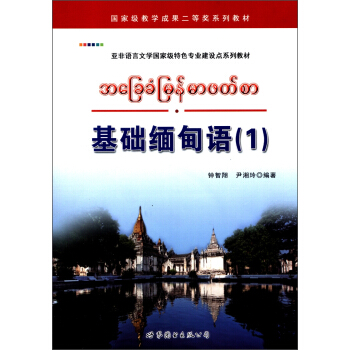

![斑斕閱讀·外研社英漢雙語百科書係:走近藝術史 [ART HISTORY] pdf epub mobi 電子書 下載](https://pic.tinynews.org/11263825/rBEhWFHRQ5QIAAAAAAccEIvhmVsAAAsGgPcVegABxwo136.jpg)
![斑斕閱讀·外研社英漢雙語百科書係:達爾文與進化論 [DARWIN] pdf epub mobi 電子書 下載](https://pic.tinynews.org/11263830/rBEhWlHRQ5QIAAAAAAL_bZ-NXG8AAAsGwAT0DIAAv-F465.jpg)

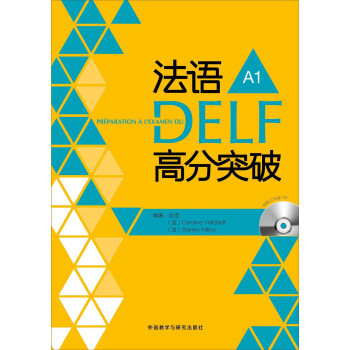
![新概念英語:2A單元達標開心測(青少版)(附光盤) [Junior New Concept English] pdf epub mobi 電子書 下載](https://pic.tinynews.org/11320121/5732d09cNf4615864.jpg)
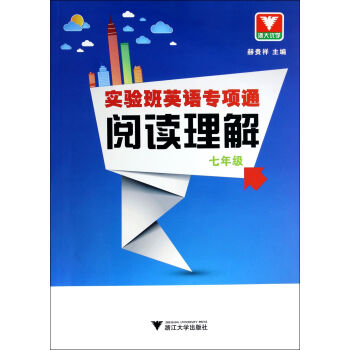
![柯林斯COBUILD高級英語詞典(英文原版 附CD-ROM光盤1張) [Collins COBUILD Advanced Dictionary of English] pdf epub mobi 電子書 下載](https://pic.tinynews.org/11457624/563c1aa6N19730c33.jpg)
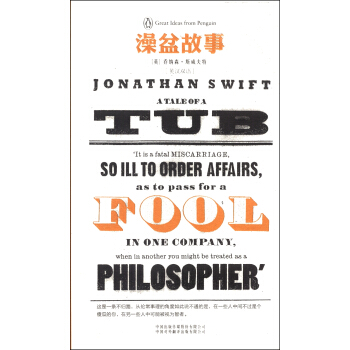

![德語口譯教程/高等學校德語專業教材 [Lehrwerk Fur Dolmetschubung] pdf epub mobi 電子書 下載](https://pic.tinynews.org/11616297/55078689N98ad989a.jpg)
